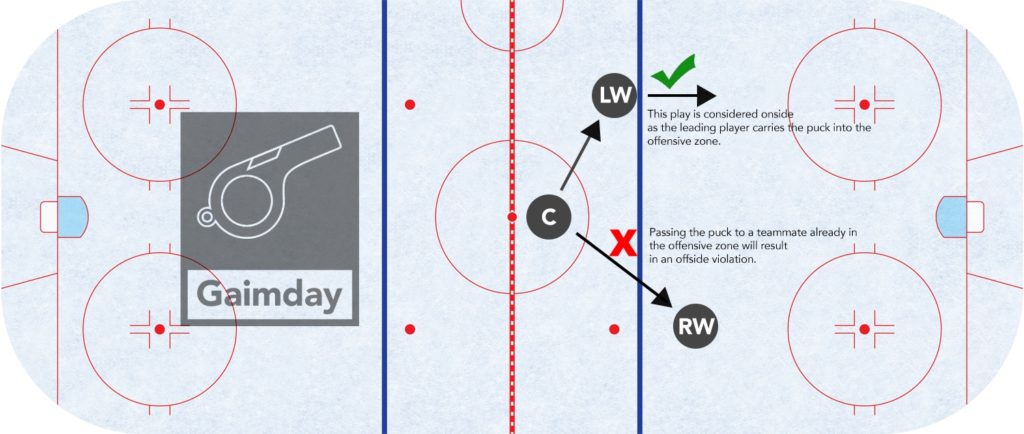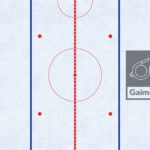Hockey rinks are all made up of 3 distinct zones: defensive, neutral and offensive zones.
In both the defensive and neutral zones, players are able to freely move the puck back and forth to one another.
When it comes to the offensive zone, there are rules that govern zone entry and re-entry for the attacking team.
These rules are collectively known by professional hockey leagues as Offside.
Offside makes up part of the set of infractions deemed illegal in hockey during game play.
Another common illegal play is Icing, which I've written about in the following blog post here.
But, let's get back to our topic in question - Offside.
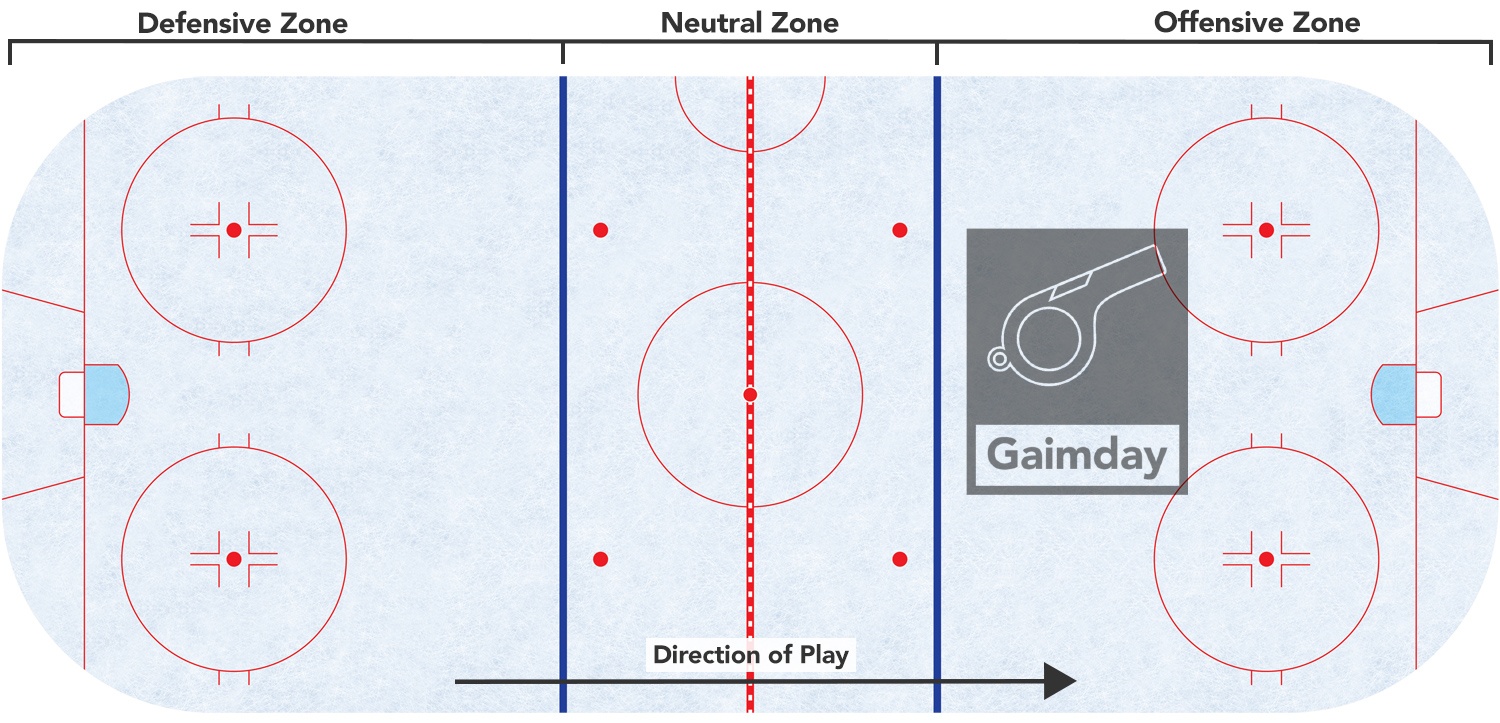
What does offside mean in hockey?
In hockey, a play is considered offside when a player enters the offensive zone prior to the puck crossing the blue line first.
Should the team in violation touch the puck, the play will instantly be blown dead by the linesman.
Otherwise, play may ensue by giving a chance to the team offside to exit the zone and tag up.
You'll always see the linesman raise their arm to signal a delayed offside call.
The tag up rule is simple to understand when the players are all behind the blue line (i.e. neutral zone).
However what you might not know is that a player can "pass on" the violation to their teammates.
For example, if the last offside player has not left the attacking zone yet, the next teammate to enter will also carry the violation.
So, now both those players must leave the zone to tag up - not just the original player that was offside.
Only then can the players re-enter the offensive zone and pursue the puck.
Just know that the tag up is no longer necessary if the defending team retrieves the puck and moves it to the neutral zone.
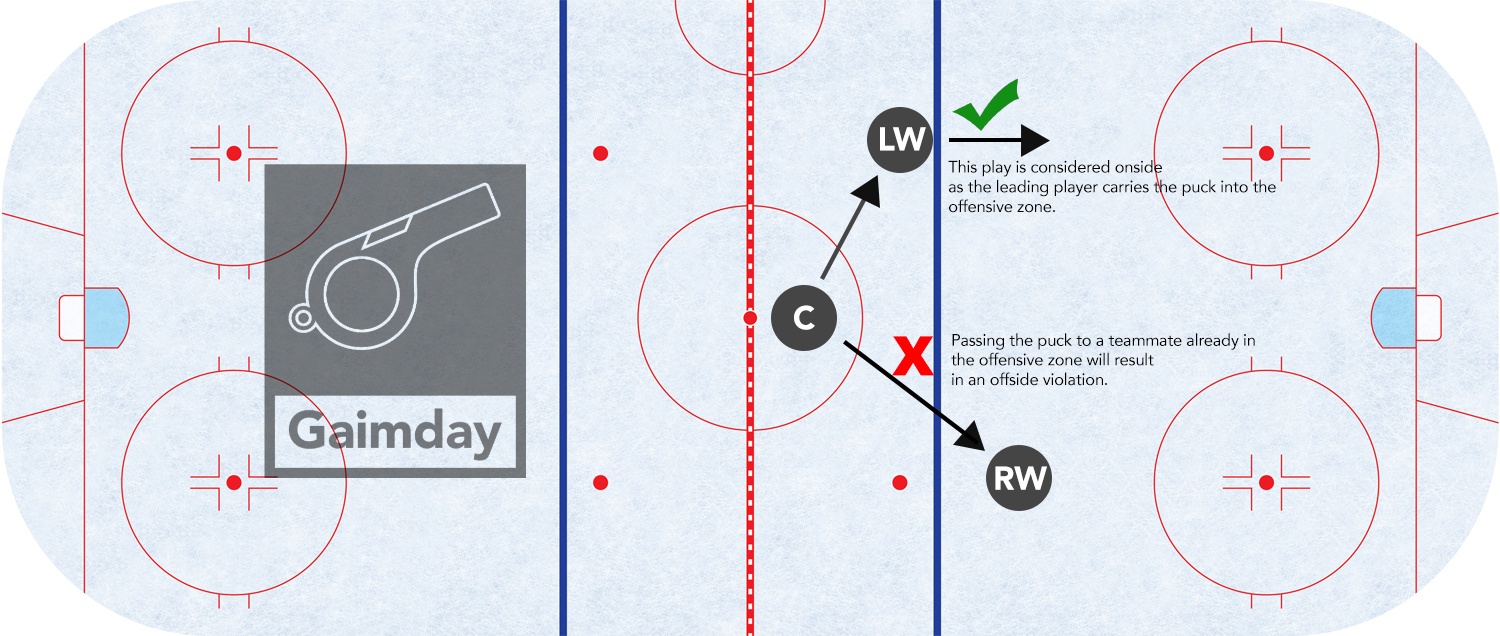
When the referee calls the offside, the subsequent face-off takes place at the neutral zone dot on the same side of the infraction.
These dots can be found close to the blue line, on either side.
To learn all about every markings on the ice and their meaning, make sure to check out my blog post on Hockey Rink Lines Explained.
As for the face-off location following an offside, there are exceptions.
It all depends on whether the offside was intentional or not.
I cover "intentional offside" further below.
But before we get into that, let's explain the finer details of offside calls.
A play is deemed offside if both of the leading player’s skates precede the puck on offensive zone entry (source).
Moreover, a play is also considered offside if the player’s leading skate is across the blue line, while their trailing skate is not touching the ice.
This rule still applies even if the rear skate appears to be fully behind the blue line but is elevated off the ice surface.
Exception to the Offside Rule in Hockey
There are 2 major exceptions to the offside rule in the NHL.
The puck carrier can enter the zone skates first if they are in full control of the puck, and none of their teammates enter beforehand.
Also, offside is called off if the puck is brought back into the zone by the defensive team while their opponents are still caught up in the tag.
The rule applies whether or not the defensive player shows intent on returning the puck in the zone.
Meaning, that they could have passed the puck intentionally back in their own zone, or if it accidentally deflected back in off their skate.
What is Intentional Offside?
Intentional offside is called if the offensive player purposely chooses to play the puck rather than leave the zone to tag up.
Typically, you’ll hear the referee scream “offside” when the team is in violation of the tag up rule.
If the referee deems the offside to be intentional, the subsequent face-off will take place in the defensive zone of the violating team.
It is the price you pay for ignoring the referee's warning call.
And the ultimate consequence would be the opposing team scoring instantly due to the face-off in your zone.
History of the Offside Rule
Originally, the NHL disallowed forward passing, similar to the sport of rugby.
Thus, only lateral or passes to teammates behind the puck were permitted.
As a result, all forward passes were deemed as offside and the play would be blown dead.
The modern-day offside rule was first introduced during the 1929-30 season, after allowing forward passing within the neutral and offensive zones just a few years prior.
The NHL has flirted back and forth with both delayed and immediate offside throughout the years.
As described earlier, delayed offside allowed teams to tag up and correct the violation as long as they didn’t touch the puck in the offensive zone.
Immediate offside resulted in the play being blown dead regardless if the violating team was in possession of the puck or not.
Since the 2005-06, the delayed offside rule was reinstated in part to increase the overall flow of the game.
The other contributing factor was that of the removal of the two-line pass rule, which was in-itself another form of offside.
The function of the now-defunct two-line pass rule is explained below.
2 Line Pass: Former Offside Rule
Prior to the 2005-06 season, the NHL employed the 2 line pass rule (or two-line pass) – an infraction also considered to be offside.
Basically, the puck cannot be passed from the defensive zone to a player beyond the center line on an offensive breakout (source).
In this instance, the center line was regarded in the same way as the offensive blue line. The puck must cross center ice prior to the offensive player.
The reason why the NHL eliminated the two-line pass rule was to increase the flow of the game and eliminate stoppages in the game.
In addition, it was also to counter the defensive Neutral Zone Trap which contributed to lower scoring throughout the 90s and early 2000s.
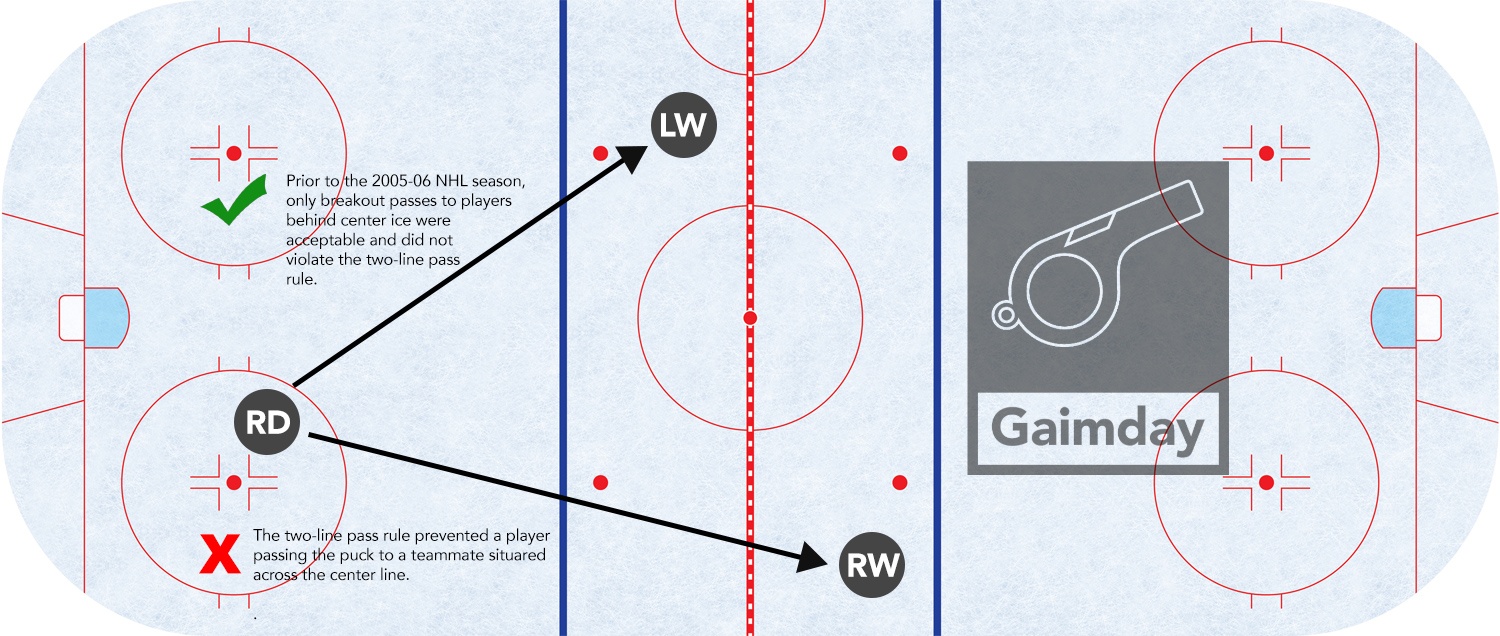
Offside in Recreational Ice Hockey Leagues
For the most part, recreational hockey leagues employ the same rules as the NHL and most other professional leagues – delayed offside.
As a reminder, delayed offside happens when an offensive player is in the offensive zone ahead of the puck but does not play the puck or interfere with an opponent. The linesman will raise their hand to indicate the delayed offside, but will not blow the whistle unless the offending team touches the puck.
Furthermore, the recreational leagues did away with 2 line passing at around the same time it was removed at the NHL level.
There is an exception to the offside rule for 3x3 hockey surfaces, which are a fraction of the size of the standard 200x85 size rinks.
The rule is that the puck must precede any of the players on offensive zone entry; however, the play is now considered onside up to the center line.
The reason to this modified offside rule is to give more space to the offensive to make plays considering the smaller rink dimensions.
Final Thoughts
For all new hockey fans or those striving to understand the sport better, just know that only linesmen can call the offside violations.
The linesmen are the referees without the orange patch on their sleeves.
For every offensive zone entry, a linesman is by the blue line to inspect no offside is being committed.
Meanwhile, the official referees (with orange patches) only raise their arms to call penalties.
Their arms up may stay up in the air for awhile, indicating a delayed penalty.
Although similar in gesture to a delayed offside, it doesn't have quite the same meaning.
